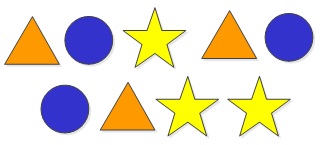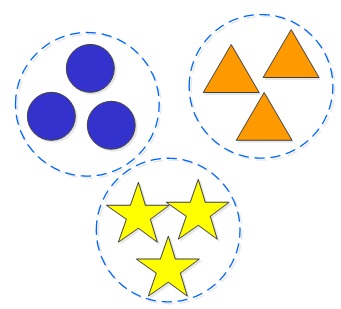How to Chunk
The chunking process includes taking information and breaking down, finding patterns or similarities, and organizing it into groups.
Chunking Process
Chunking can be viewed as three separate techniques:
- Break larger amounts of information into smaller units
- Identify similarities or patterns with the information
- Group information into manageable units by similarities
These techniques can act as steps in the chunking process. The number of techniques or steps you use to chunk will depend on the information you are chunking. Sometimes you may use all three techniques, while other times you may only use one technique.
Simple Chunking
Sometimes you may just need to organize information into arbitrary groups.
Example: if you are chunking a long number (i.e. phone number) you just need step one – break larger amounts of information into smaller units. There is no need for any other steps.
8607891421
860-789-1421
Instead of having to remember a 10 digit phone number, you can divide it into groups of numbers and remember three numbers.
More Complex Chunking
There may be times when you need to organize information based on similarities or patterns.
Example: If you are creating a shopping list, you would benefit from the other steps – identifying similarities and grouping them.
Chunking Steps
1. Breaking Larger Amounts of Information into Smaller Units
Typically the first step in chunking is to break the information down into smaller units. For example, you may break down the steps associated with assembling a table.
2. Identifying Similarities
The second step in chunking is often to identify similarities or patterns in the information. For example, you can categorize information based on commonalities such as time sequence, events, meaning, etc. The benefits of identifying similarities, is that you can remember the pattern rather than a list of separate pieces of information.
3. Grouping the Chunks
Chunking is not simply taking information and breaking it down into smaller pieces, but also organizing the chunks. Once the similarities have been identified, the next step is to turn the bits of information into chunks.
You need to arrange the chunks into some organized logical manner or sequence that makes it easier for you to process and encode the information.
Retrieval of Chunks
Since the information in group based on commonalities, you can use these commonalities as cues the help you remember the information. For example, if you chunks your shopping list into sections of the store, you can use the section such as “diary” or “frozen” to help jog your memory.
Summary – How to Chunk
Chunking can be a valuable strategy when trying to process information and/or remember information. The chunking technique(s) you chose will depend on the type of information you want to chunk.



